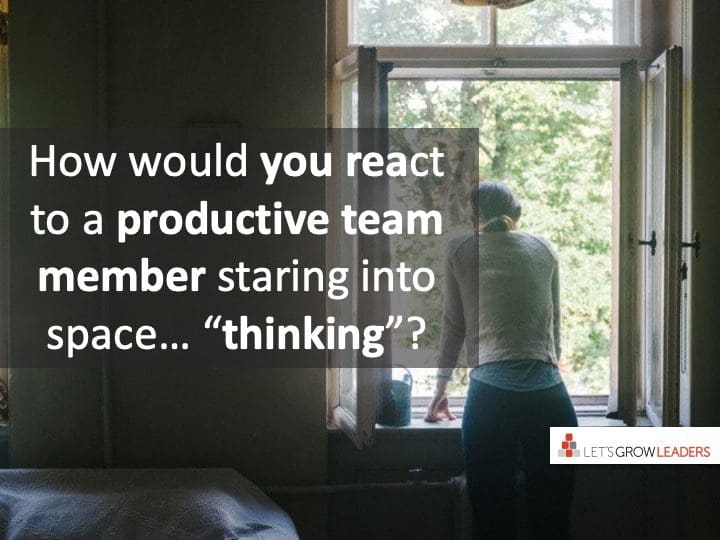A creative team starts with room to think.
The rocky mountain air was crisp with fall chill–a perfect time for a fire in the wood-burning stove. We placed the logs on top of the kindling, held the flame beneath the wood, and … nothing happened. Our fire-to-be had the same problem that plagues many leaders who want a more resilient and creative team.
The logs were too close together.
Fire needs oxygen to ignite and spread, but the tightly packed wood didn’t allow the air to move freely through them. We removed two logs, rearranged the others into a more open stack, and within seconds had a warm and inviting fire.
Oxygen for Teams
As we wrote Courageous Cultures, we spoke with Jason Fried, co-founder of Basecamp, about how leaders can build more creative teams.
He observed that leaders who are frustrated when people don’t creatively solve problems should pay attention to workload.
Creative problem solving, he said, “requires time to think, consider, and marinate. In most companies, there’s no time for that. Calendars are chock full and leaders don’t understand that they’ve spread people too thin.”
For teams working remotely or under heavy pandemic-induced workloads, this tendency to pack the day with wall-to-wall appointments increased.
Like the logs packed too tightly to catch flame, calendars packed too tightly don’t permit creative problem-solving. It also erodes resiliency by taking away the recovery time people need to process their emotions and catch their breath.
Creativity and resiliency require margin—space in the calendar to think, reflect, solve problems, and build relationships.
How to Create Margin for a More Resilient and Creative Team
1) Start with Self-Reflection: How do you view margin?
There are no easy answers to how you can build in a margin for reflection, but to start making this shift, consider how you would react if you encountered a productive team member standing at the window, staring into space.
You ask, “Hey, what are you up to?” and they reply, “Thinking.”
Consider how your words and actions reinforce that making time for white space to think is not just okay, but a valuable part of many of your employee’s jobs.
2) Take Action
We’ve worked with leaders and teams around the globe who have found different ways to create more margin and, ultimately, more creativity and resiliency. Here are a few strategies they’ve used and that you can use:
- Meeting-free days or half-days
- 90-minute interruption-free blocks of time each morning and/or afternoon
- For teams across time-zones: no meetings scheduled before or after specific hours.
- Scheduling all meetings in 10- or 15-minute increments (eg: a 40-minute meeting rather than 60) to create automatic buffer time between appointments at the top or bottom of the hour
- Schedule white space – make appointments on your calendar for the thinking time needed to solve problems and perform work on projects
- Limit single-issue interruptions
- Celebrate and highlight different ways people use their margin. Eg “I found Gale staring out the window yesterday and she was thinking about how we might improve the information we give our suppliers so they can respond more quickly. It was a great idea and …”
- Flexible schedules that allow people to work when they can be their most productive. The time spent between work on other life-tasks provides time to reflect and think about work-related challenges.
- Workload reviews during one-on-ones. Pay attention to deadlines, expected workloads, margin needed to allow for interruptions and emerging issues.
- Mini-team masterminds (we share more about this technique here).
You may even want to bring your team together and use the U.G.L.Y. technique to address this strategic issue. Begin by asking these four questions: “With regard to creating more margin in our schedules …”
3) Follow Through
As with any intention, schedule the finish. Create a specific time you will meet with your team to evaluate how your new intentions are working – perhaps one week after you implement them.
Be prepared to offer both encouragement and accountability to help everyone internalize that “this is how people like us” do things. If you’ve had a no-margin culture, it will take time to get everyone used to breathing again. Stick with it—you’ll have a more resilient and creative team.
Your Turn
We’d love to hear from you: What is your favorite way to create more margin for your team to think, reflect, process, and recover?







0 Comments